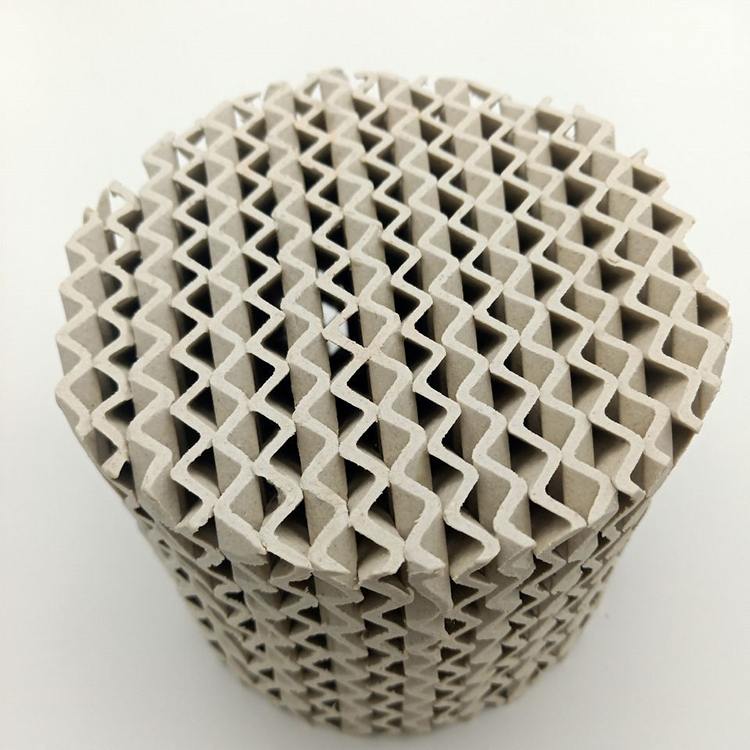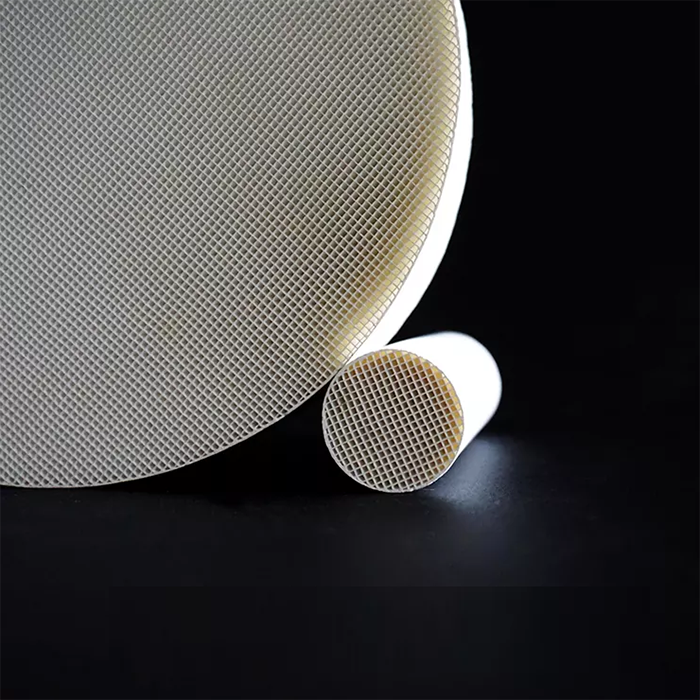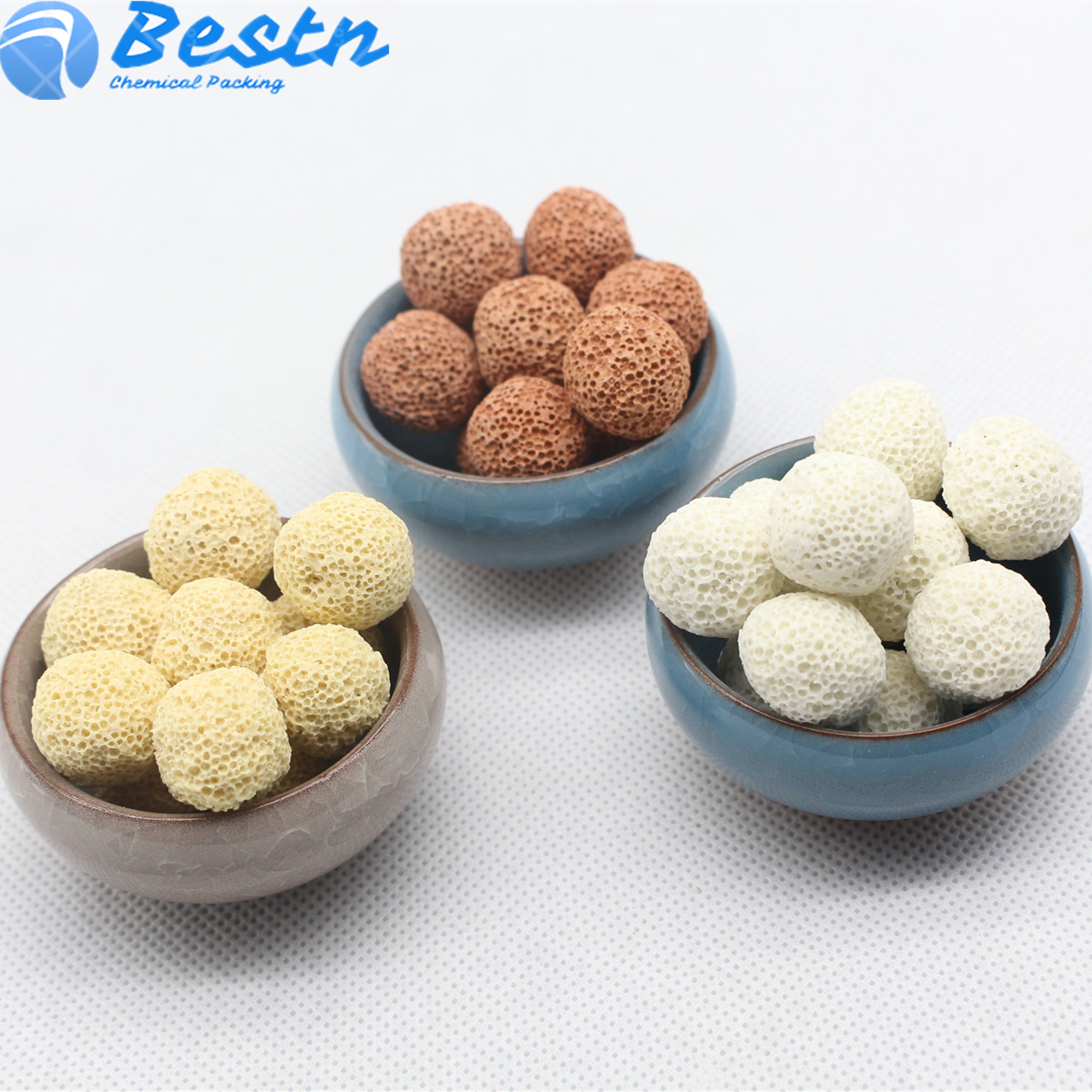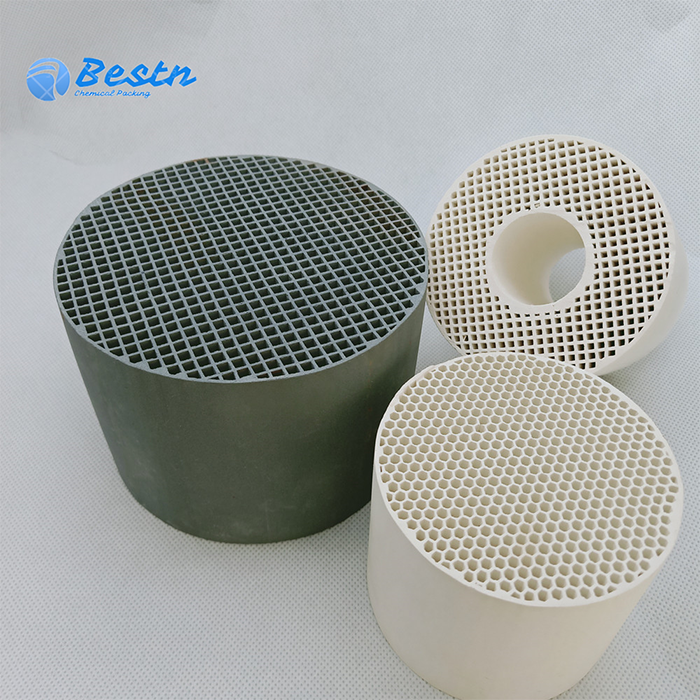
Facroty Price Ceramic Saddles Tower Packing – Heat Resistance Ceramic Structured Packing for Tower Packing – Bestn
Facroty Price Ceramic Saddles Tower Packing – Heat Resistance Ceramic Structured Packing for Tower Packing – Bestn
Facroty Price Ceramic Saddles Tower Packing – Heat Resistance Ceramic Structured Packing for Tower Packing – Bestn Detail:
Ceramic Structured Packing consists of many packing units of similar geometric design. Corrugated sheets placed in parallel form cylindrical units called corrugated tower packing. These are a form of highly efficient packing with separating efficiency several times higher than that of loose packing. They have the quality of low-pressure drop, increased operating elasticity, minimum amplifying effect, and maximum liquid treatment compared to loose tower packing.
|
Composition |
Value |
|
SiO2 |
≥72% |
|
Fe2O3 |
≤0.5% |
|
CaO |
≤1.0% |
|
Al2O3 |
≥23% |
|
MgO |
≤1.0% |
|
Other |
2% |
● High capacity. New tower design may reduce diameter, while renovate old towers may increase capacity significantly.
● High separation efficiency. Since it has much larger specific surface area compared to random packing.
● Low pressure drop, which leads to reduce energy consumption largely.
● Large flexibility, and scale effect is not obvious.
● Suitable for all tower diameters.
● Strong resistance to corrosion of acid and alkali, especially to H2S, naphthenic acid and Cl-.
● Rectifying organic halide.
● Rectifying and absorbing some corrosive mixtures, which are definitely regulated in pressure drop and theoretic plate number.
● Applied in some towers that contain a large quantity of natural media used to absorb nitric acid and concentrated sulfuric acid, as well as for purifying the air in chemical plants.
● Operating in vacuum conditions at a bottom absolute pressure of 100pa.
● Used in heat ex changer and demisting, or as a catalyst carrier.
1. High liquid & vapor loading, Column diameter could be designed smaller for new equipment and capacity could be increased
dramatically for existing column revamp.
2. High resistance to nearly all mineral and organic acids and derivatives, partly resistant to alkali.
3. High mass-transfer efficiency. Much higher specific surface area than random packing.
4. Low pressure drop, considerable energy savings.
5. Wide turn down ratio. Easy to scale up.
6. Suitable for all sizes of column.
Product detail pictures:







Related Product Guide:
With a sound enterprise credit history, exceptional after-sales services and modern production facilities, we've earned an outstanding track record amongst our consumers across the whole world for Facroty Price Ceramic Saddles Tower Packing – Heat Resistance Ceramic Structured Packing for Tower Packing – Bestn , The product will supply to all over the world, such as: Sydney, Plymouth, Danish, We supply professional service, prompt reply, timely delivery, excellent quality and best price to our customers. Satisfaction and good credit to every customer is our priority. We focus on every detail of order processing for customers till they have received safe and sound products with good logistics service and economical cost. Depending on this, our products are sold very well in the countries in Africa, the Mid-East and Southeast Asia. Adhering to the business philosophy of ‘customer first, forge ahead', we sincerely welcome clients from at home and abroad to cooperate with us.
The company can think what our think, the urgency of urgency to act in the interests of our position, can be said this is a responsible company, we had a happy cooperation!






